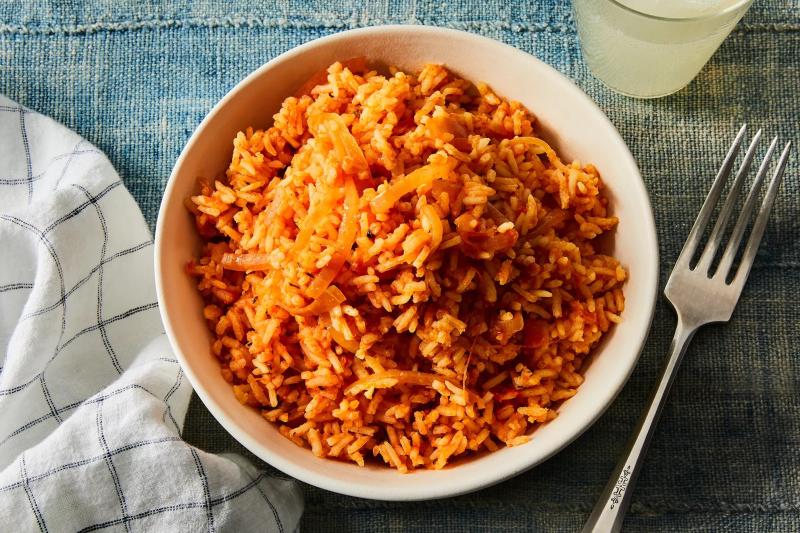What can I say, really? This, too, is a delicious treat. If you don’t like rice, then you’ve never had anything like this before.
What Is Jollof Rice?
The rice dish known as “jollof” originates in West Africa. The dish is typically prepared in a pot with long-grain rice, spices, tomatoes, onions, meat, and vegetables. Both ingredients and methods of preparation are subject to regional variation.
Origin of Jollof Rice
Jollof rice can be traced back to the 14th-century Senegambian region, which included present-day Senegal, Mauritania, and Gambia and was ruled by the Wolof Empire. Originally, thieboudienne was the inspiration for jollof. There was seafood, rice, vegetables, and shellfish on the menu.
Given the widespread consumption of rice in the Upper Niger valley, food and agriculture historian James McCann applauds the claim but doubts it originated in Senegal and spread to the rest of Africa. However, he argues that the dish actually spread with the Mali empire, and more specifically with the Djula merchants who travelled to various regional markets.
An agronomy professor emeritus named Marc Dufumier has proposed that the food’s modern emergence can be traced back to the colonial promotion of intensive peanut cropping in central Senegal for the French oil industry.
Jollof Rice Variants
This is one of the most popular dishes throughout West Africa, but it goes by many different names and uses a wide variety of ingredients depending on the region.
Zaame is the Malian name for this rice, but the Wolof people gave it the name Jollof, which is now more widely used.
The name “riz au gras” refers to the dish in countries where the French language is spoken. The dish, despite regional variations, is universally understood and has become the most well-known dish from Africa.
Jollof Rice Ingredient
Ingredients for this dish include rice, tomatoes, cooking oil, ginger, garlic, and pepper. Adding puree is a great way to give a dish more vibrant color. The seasonings, including salt, stock cubes, spices, curry powder, and dried thyme. Meats like beef, fish, chicken, and turkey are available as optional additions to the meal. To taste its best possible version of itself.
Jollof Rice Regional Viaration
There’s something distinctive about the cuisine of every country in West Africa. Generally speaking, Ghana and Nigeria are at the forefront of the battle for best Jollof.
Nigerian Jollof
Ingredients for a traditional Nigerian Jollof include rice, tomato paste, tomatoes, vegetable oil, pepper, stock cubes, and onions. Meat, pepper puree, and fried tomatoes all form the base, and almost everything else is cooked in the same pot.
It goes well with a variety of sides, including fried plantains, steamed vegetables, moi-moi, salad, coleslaw, etc.
Ghanian Jollof
For authentic Ghanaian Jollof, you’ll need vegetable oil, ginger, onions, pressed garlic cloves, tomato paste, chili peppers, and either chicken, beef, or goat. Black pepper and either refined or local rice.
In their method, the meat is first prepared by steaming it with a puree of ginger, garlic, and onions, and then frying it until it is thoroughly cooked. The remaining ingredients are then stir-fried after this.
The dish is typically served alongside shito, a type of pepper, and salad, and accompanied by a side dish of well-seasoned dried fish, beef, mixed vegetables, or chicken during ceremonies and parties.
Bissau-Guinean Jollof
Jollof Rice, a traditional dish from Guinea-Bissau, is cooked with tomatoes, tomato paste, onions, yellow bell peppers, red bell peppers, bay leaves, and garlic.
The flavor of the Jollof is enhanced by slowly cooking these components in vegetable oil. Last but not least, the dish can be accompanied by chicken, okra, fried plantain, or eaten on its own.
If you already like rice, that’s great, but if you haven’t tried it yet, you owe it to yourself to do so today, because the variety of ways in which different cultures take the time to prepare this food makes it even more interesting.






